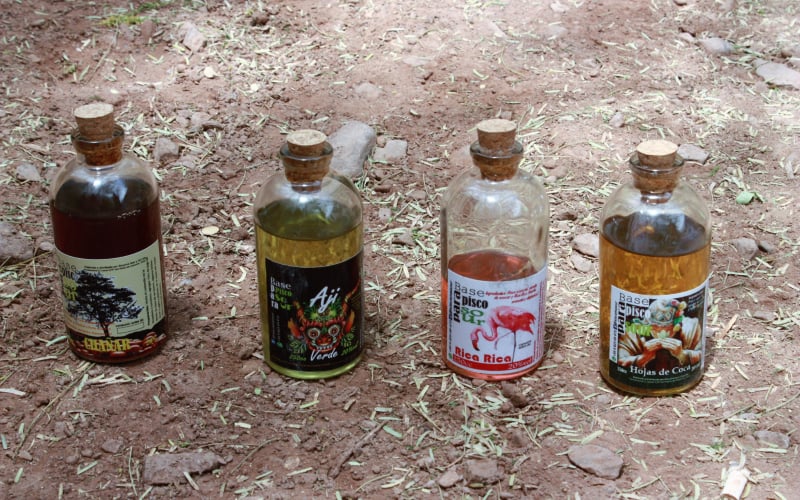Think of the world’s driest desert, and flavorful gastronomy will rarely spring to mind. This would be a grievous mistake. To introduce you to another one of our Atacama Must-Have Experiences, our Content Coordinator, Helen Cordery, shares her experience learning about the food of today’s Atacama. Let’s go explore the secret nooks of San Pedro de Atacama and discover the local treats and ancient techniques sure to get your taste buds tingling!

Francisca has a laugh you’d recognize anywhere. Short and fiery, her hair curls around her face in small tendrils while gesturing with her hands that we should dig in.
"Come on you guys, these are the best pastries in Chile! And don’t forget to spread on the local honey, too - so delicious. Over here is the coca leaf tea, now that will help you wake up!"
We are seated at what Francisca declares is the "best cafe in San Pedro known only to locals" called Roots Cafe (apparently, the secret is out early as a steady queue of tourists pop in and out frequently). Before of us is a basket of baguettes, chocolate croissants, carrot jam, and tea - a strange sight to behold while in the middle of the Chilean desert.

"Everywhere you go in San Pedro you will get this bread. La Franchutería is a bakery run by Arthur Becker and its the real deal!" Francisca explains to us as we dutifully dole out our breakfast. Becker is a Frenchman by birth (Burgandy) who learned the art of baking while working at the French base in Antarctica perfecting his skills working in Russia, Madagascar, and France before coming to settle in the sleepy tourist town of San Pedro. The locals, it seems, adore him; his bakery, La Franchuteria (Calle Gustavo Le Paige 527 B), has been voted the best in Chile and provides most of the restaurant bread here.
The bread is delicious but what captures more of our attention is the tea made from infused coca leaf. Coca is an Andean plant that was chewed and brewed for thousands of years before finding itself in murky territory with the United Nations in 1961. Taken as it is, the plant is a natural stimulant often used in the same way as coffee that can also help oxygenate the blood at high altitudes and lessen the pangs of hunger. Generations ago, coca was even used as a form of payment while today it is being touted as a superfood that contains calcium, potassium, phosphorus, vitamins B1, B2, C, and E, protein, and fiber.
I give it a sip, the taste bringing to mind a rich boldo tea (South American tree). While we munch and slurp, Francisca rattles off a quickfire history of the region.

"Originally, this area was colonized by the Tiwanaku empire from Bolivia, and this started off the first train of commerce between the Andean peoples and the coast. There were no common gods or even dialects linking these people, just this interest in trade. Next came the Aymara empire which gave us some of the food legacy you will see today, like seeds, the farming of camelids, and preserved fruits and potatoes like the chuño," Here she hands around a hardened white lump she asserts is a chuño, "this potato is frozen at night and then dried in the morning, and you can find this technique all around the Andes. The Incas came next, and they colonized this area by teaching each clan chief Incan ways to replicate, including how to use terraces where each floor has a different temperature. The Spanish were the more recent, bringing with them garlic, more corn varieties, fava beans, carrots, cows, donkeys, chickens, and diseases."
After nodding enthusiastically, one person brings voice to the topic on all our tongues: do people really eat llama and where can we try it?

"Don’t let anyone fool you into thinking you are eating llama," Francisca laughs, "Llama has been declared ‘unfit for human consumption’. What you will find, however, is guanaco meat, which we will try shortly."
But first, it’s time to leave Roots Cafe and head out into San Pedro. San Pedro is something of a dusty village comprising of one main street (Caracoles) and a few side streets that curl out in fine wisps and then kind of disappear into the desert. Caracoles is lined with trekking and souvenir shops, tour operators, and various restaurants; a far cry from the desert village I’d imagined.

We walk to the outskirts of the town under the watchful gaze of the Licancabur Volcano and his decapitated brother, Jurique. Legend (one of the many) has it that Licancabur and Jurique were fighting for the love of nearby hill, Kimal, which made their father (active volcano, Lascar) angry. Lascar cut off the head of Jurique and banished Kimal far away, which explains their strange geology. The local licantay people worshiped these mountains, perhaps explaining the ancient mummies found at the site of Licancabur.
.jpg?width=800&name=san%20pedro%20(1).jpg)
After walking for a bit, we sit down for some sweet mote con huesillo or husked wheat in juice with a dehydrated peach. This refreshing concoction, though enjoyed all over Chile, actually comes to us from the Andean cultures. After slurping/chewing our way through, we find ourselves at St Peter’s Brewery, the site of beermakers revolutionizing the craft beer scene. We plop ourselves down, thankful to be out of San Pedro’s relentless sun.
"OK, so here we are going to try beer made with local ingredients. We’ve got rica rica, which is a plant you’ll find everywhere in the Atacama, chañar, which is like a hazelnut and which has a very sweet taste, and algarrobo bean, from the Algarrobo tree and which also is very sweet naturally. Enjoy!"

Francisca doesn’t need to tell us more - we down our helpings without further encouragement. The waiter then appears with a ¨llama¨ empanada (but we know it’s guanaco, right?).
"OK guys, so you know that you cannot eat llama and actually, guanaco is a protected species in the desert. So what are you eating? It's still guanaco but it’s brought from Torres del Paine, where they have a lot of guanacos. CONAF allows hunting at certain times of the year in order to keep their numbers from growing too high."
The meat is delicious and dark, but the revolution here is the pastry, perfectly cooked and soft. Once we’ve finished it’s time to take to the backroads of San Pedro.

Here we get a close up look at the ingredients we tried in the beers: there’s chañar, a tree that’s evolved perfectly in the desert to photosynthesize through its trunk; the Algarrobo, loved by dogs and llamas and which local legend says kills all those who sleep beneath it; the peppermint tree, whose leaves are used as minty seasoning; and cachiyuyo, which drains salt from the ground so that other plants are able to grow. It is down one winding street under the shade of an Algarrobo tree that we partake in a pisco tasting, an explosive venture that varies from sweet to positively fiery (one contains chili!).

After considerable time in the outskirts of San Pedro, it is time to return to the bustling CBD. We stop by Paacha for lunch, sitting beside the pool with a fresh juice and ceviche that Francisca informs us is Bolivian (made with corn), followed by quinoa sushi. The mention of Bolivia seems to be everywhere in San Pedro, the border being a short hop over the mountains and the country's history intertwined with Chile (a result of the nations' War of the Pacific that began in 1880).

Afterward, we return to Caracol street. Here we step into the modern Mercado Blanco to try the town’s "most famous ice cream"; there are a few unusual flavors to choose from but I choose rica rica (I’m a fan!) and quinoa.
The tour closes with a final beer tasting and some local Chilean tunes jazzed up by buskers, closing a satisfying day of culture mixed with local food tastings that seem a world away from Santiago and Southern Chile.

San Pedro Food Stops to Try For Yourself
*Chela Cabur - San Pedro’s only bar
* Paacha (inside Hotel Kimal) - well-trained staff & beautiful setting
* Baltinache - a fusion of local flavors and modern techniques
* La Pica del Indio - huge portions and set lunches, get there before 2 pm
* Roots Cafe - San Pedro’s best coffee and breakfasts
* Pizzeria El Charrua - the best pizza in San Pedro
* La Franchuteria - French-style bakery

Ready to try Atacama food for yourself? Book our Ancestral Atacama tour which includes all the highlights, as well as traditional food tastings. For the hikers, our Atacama Cultural Journey is also a great option to get off the beaten track. Learn more by sending a message to reservations@cascada.travel.















